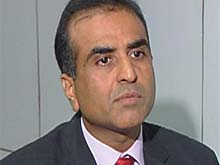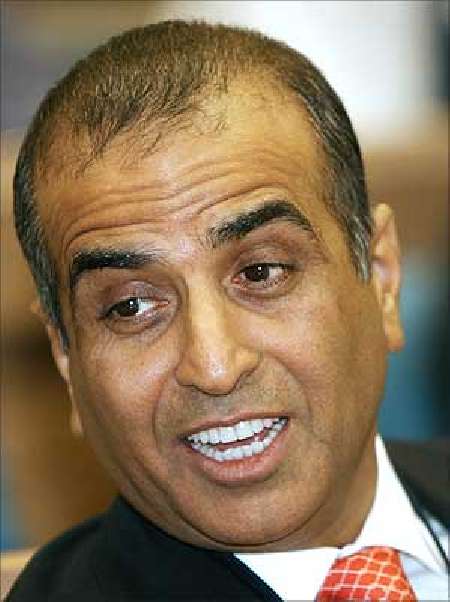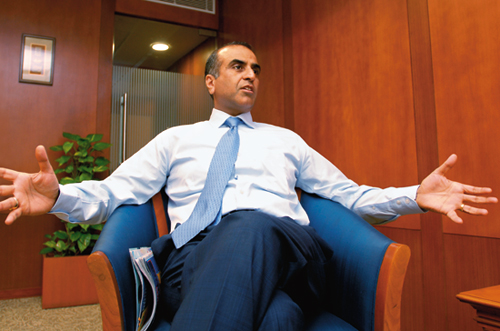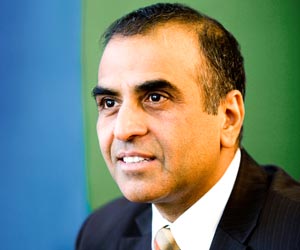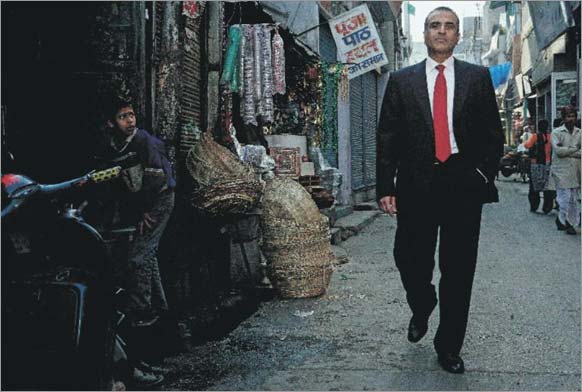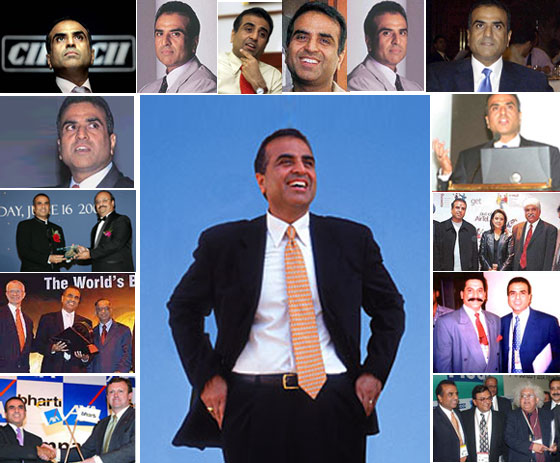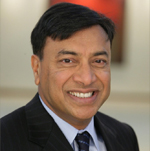can be labelled as the most ambitious telecom entrepreneur in India. The US$7.2 billion turnover company runs India’s largest GSM-based mobile phone service. He is the son of Sat Paul (former MP) and Lalita.
. The son of a parliamentarian, Sunil did not want to follow his father’s footsteps. He had shown an interest in business even from his teenage days. So after graduation, Sunil got together with his friend and formed a small bicycle business with borrowed capital in the1970s. But by 1979, he realized that this business would remain small. So he moved out of Ludhiana, spent a few years in Mumbai and in 1981, was running an import and distribution operation out of New Delhi and Mumbai.
By 1982, Mittal had started a full-fledged business selling portable generators
from Japan and that gave him the chance to involve himself in activities like marketing and
. Things went smoothly until the government banned the import of generators as two Indian companies were awarded licenses
generators locally.
Sunil Mittal got interested in push button phones while on a trip to Taiwan, and in 1982, introduced the phones to India, replacing the old fashioned, bulky
that were in use in the country then. Bharti Telecom Limited (BTL) was incorporated and entered into a technical tie up with Siemens AG of Germany for manufacture of electronic push button phones. By the early 1990s, Mittal was making fax machines, cordless phones and other telecom gear.
The turning point came in 1992 when the Indian government was awarding licenses for mobile phone services for the first time. One of the conditions for the Delhi cellular license was that the bidder have some experience as a telecom operator. Mittal clinched a deal with the French telecom group Vivendi. Two years later, Sunil secured rights to serve New Delhi. In 1995, Bharti Cellular Limited (BCL) was formed to offer cellular services under the brand name AirTel. Within a few years Bharti became the first telecom company to cross the 2-million mobile subscriber mark. The company is also instrumental in bringing down the high STD/ISD,
in the country by rolling the countries first private national as well as international long-distance service under the brand name IndiaOne. In 2001, the company entered into a joint venture with Singapore Telecom International for a $650-million ubmarine cable project, the countries first ever undersea cable link connecting Chennai in India and Singapore.
Always on the move and making an impact and excelling in whatever he did, this clear thinking risk taker has changed the face of the Indian ICT space. For his contributions he has been honoured with several awards. He was chosen as one of the top entrepreneurs in the world for the year 2000 and amongst ‘Stars Of Asia’, by ‘Business Week’, he received IT Man of the Year Award 2002 from Dataquest and CEO Of the Year, 2002 Award (World HRD Congress). He is the member of National Council of Confederation of Indian Industry (CII), Federation of Indian Chambers of Commerce & Industry (FICCI), Chairman, Indo-US Joint Business Council, Member, Advisory Committee constituted by Ministry of IT. Mittal has to his credit the breaking up of the 100 year old monopoly of state run companies to operate telecom services in India. Now he heads a successful empire focused on different areas of business through independent Joint Venture companies with a market capitalization of approximately $ 2 billion, employing over 5,000 people and still growing. Bharti Foundation has funded over 50
in Madhya Pradesh and also donated Rs 200 million to IIT Delhi for building a Bharti School of Technology and Management.
In spite of his deep involvement in work, Mittal the man, is calm, seldom ruffled and very
. He says he achieves a sense of detachment and peace with regular practice of yoga. He is thankful for a supportive family including a daughter and twin sons, with whom understandably he doesn’t get much time to spend. His brothers Rakesh and Rajan are with him in the business.
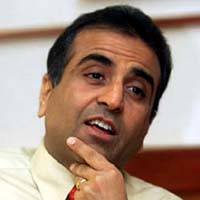 |
| Sunil Mittal |
There’s something slightly scary about Sunil Mittal’s success. I first met him over a decade ago and he was already successful enough. Airtel had launched its mobile service in the Delhi circle. The Mittal brothers had their Beetel brand of digital telephones and Sunil had all the outward trappings of success: he’d bought his first Mercedes many years before.
But there was nothing about Sunil or about the business environment as it then existed to suggest that he would ever reach the stage he is at today. I recall a discussion programme on Doordarshan in the pre-satellite news channel days. We were talking about the telecom revolution and Sunil was one of the guests while I was the moderator. It was just after the second round of telephone licences and Airtel had done badly, winning only the Himachal Pradesh circle.
Though there were many other guests on the programme, including a former telecom secretary, the star of the show was Mahendra Nahata of Himachal Futuristic. This was when Nahata’s company (HFCL, for short) had won several licences on the back of telecom minister Sukh Ram’s support and most people regarded HFCL as the future of Indian telecom.
I asked Nahata the question everybody was asking: how on earth did he expect to generate the huge profits from telecom that his bids had projected? Nahata was confident, cocky even. Sunil, on the other hand, was low-key.Why, I asked, had he lost out to the likes of HFCL?
‘I don’t have the money,’ he smiled. But when I asked whether he believed Nahata’s projections were valid, he turned sombre. The telecom business was headed for a huge shake-out some years down the line, he said quietly. He did not share the optimism of many of his competitors. ‘ There will,’ he said firmly, ‘ be blood on the streets.’
Everybody knows what happened in the decade that followed. The blood overflowed through the roads and avenues of our metropolises. Sukh Ram went to jail. Nahata’s projections were trounced by reality. And as the bust began to take hold, Sunil and Airtel swooped down on the bleeding licencees and bought them all out.
Today, Airtel has a national network with a presence in nearly every major sector. The company is among India’s largest and its market capitalization is Rs 60,000 crore. Sunil and his brothers own 32 per cent of the company and are therefore worth something like Rs 20,000 crore.
And yet, when you meet him, he is still the same low-key guy who came to the Doordarshan studio. He doesn’t seem poor or unsuccessful but he doesn’t act as though he is much richer than he was a decade ago. (Much richer? He was probably worth much under Rs 100 crore in those days, a far cry from today’s Rs 20,000 crore.) How did he do it? How does he explain the spectacular success?
Sunil says he has no real explanation. And then comes the really scary bit: ‘ The only answer I can give is that there is a divine purpose. God has some plan for me. And I am merely executing his plan. I can’t think of any other explanation for our success.’
When we called him the messiah of the telecom sector, we had no idea that this was what it meant.
Rise to riches
The broad outlines of Sunil Mittal’s rise to riches are well known. It is a story that Sunil tells particularly well himself. Four years ago, I had him on my Star Talk programme, one of his first fulllength television appearances, and he ended up being one of the show’s best-ever guests because he spoke with such sincerity and intensity about how he’d made it to the big league.
For those of you who missed the story that has now been featured prominently by every business magazine in the country, it goes something like this: Sunil’s father was Satpaul Mittal, a well-respected and much-liked politician from Ludhiana. The older Mittal had three sons, all of whom went into business (they are still partners in Airtel) but the star was always Sunil.
He started small, both in terms of age and vision.When he was nineteen, he began to import scrap and then moved into bicycle parts. Next came a small-scale project to manufacture stainless steel sheets. This took him out of Ludhiana and to Mumbai where he had to sell his product.He has fond memories, he says, of sitting on low stools in small cubicles in Pydhonie and Abdul Rehman Street, trying to persuade traders to buy his sheets.
The Bombay experience taught him two things. First, that he was a natural salesman. And second, that he had to get out of Ludhiana. As long as the Mittals remained a Punjab-based family, they would always be small-time.He needed to move to a big city, to be near the action, and to learn to think big.
In 1979, Sunil moved to the small MP’s flat that his father had been allotted in Delhi. At a time when everybody dreamed of being an exporter, Sunil moved into imports instead. He made huge profits importing steel and zip fasteners till one day, he ran into a harassed Japanese salesman in the capital’s Bengali Market.
The salesman worked for Suzuki and had been sent to India to find a dealer for the company’s generators. Suzuki operated on the assumption that the Indian market would mirror the rest of the world where generators were used to power fairs, outdoor exhibitions and hot-dog stands. Sunil knew better. He realized that in a country that was always short of power, he could sell generators to households that wanted an alternative during electricity cuts.
The Suzuki salesman had to be persuaded to appoint Sunil as his dealer but once Sunil got the business, he quickly created the consumer genset market and in no time at all was the largest importer of Suzuki generators in the whole world. He says now that the experience was a turning point in his life. He learnt to do business with foreigners and moved into the branded product sector.
By the early 1980s, Sunil was a millionaire. The genset business was booming. He had a flair for trading and he’d made a fortune from property development. Inevitably, the big boys cast a covetous eye on his sector. In 1983, the Birlas and the Shrirams were given licences to manufacture gensets in India. To protect this developing industry, the government promptly banned all generator imports.
Sunil was out of business.
He scrambled to find alternative sources of income. The Suzuki company, sympathetic to his predicament, recommended that he be appointed a dealer for the new Maruti Suzuki car. Remembers Sunil, ‘ All the other dealers were appointed on the basis of political influence. The only single request that Suzuki made was that I should be given a dealership. Even then, they turned me down and gave it to somebody else.’
Is Sunil bitter about the failure to land the dealership?
‘ Not at all. In those days there was lots of money in a Maruti dealership. If they had made me a dealer, then I would have got rich and comfortable. Looking back, I think that it was God’s design that I should not get too comfortable. He had other plans for me.’
Indeed, He did.
The big break
Searching for a new business opportunity, Sunil ended up in Taiwan, where he saw a push-button phone. He decided that this was the future and began to import the components for the phone, entirely illegally, as far as I can tell, and launched it in the Indian market. He chose the brand name Mitbrau.
That sounds very German, I tell him.
‘ Exactly, that was the idea,’ he explains. ‘ Actually all it meant was Mittal brothers, but I wanted to make it sound like a foreign brand name because I had learnt that Indian consumers didn’t like desi brands.’
Fortunately, the government opened up the telecom market and the Mittals were among the fifty-two businesses chosen to manufacture telephones and handsets. His business, using the brand name Beetel, did well with sales of about Rs 25 crore – a huge sum in those days – but Sunil was not satisfied.He could see beyond the nice house and the Mercedes and sensed that no matter how comfortable he was, the Mittals were still very far from the big-time.
The big break came in 1992, when the government invited bids for mobile telephony. Sunil saw the story about the bids in the Economic Times when he was in Goa for a New Year holiday and decided that he was going to be among the bidders. Sadly, his father died within days. Even so, as heartbroken as he was, he took six months off from the family business to put together his master plan for mobile telephony.
People forget now that when the Government of India first opened up the telecom sector, nearly every global telecom player made a beeline for India. Among these experienced multinational players, the Mittals seemed like ignorant pygmies. But Sunil was sure that he could put together a consortium with many of the foreign players and still make a valid bid.
The problem was that he didn’t have much money and he certainly didn’t have much in the way of reputation.What he did have, however, was his personal charisma. He has a unique ability to win people over in one-on-one encounters and if you push him, he will admit that his speciality consists of persuading people to go further than they had originally planned through the sheer force of his personality.
For instance, he pushed Vivendi into going with him after a single meeting. Later, after the deal had been signed, the company sent a team to India to check out exactly who the Mittals were. The team reported back that they were small-timers and likely to remain so. Vivendi pulled the plug days before the bid was to be submitted.
It was time for Sunil to work the phone. He called the company in Paris. ‘ Look,’ he said, ‘ when you agreed to go with me, you sensed something. You saw something in me. Remember that something. Go with your instincts. Forget what your team has told you.’
Against the odds, Vivendi stuck with him.
When the bids were opened, Airtel had won all four circles. The government promptly declared that it had a new rule: one company, one circle. So, Sunil was left with one of the two Delhi licences.
In retrospect, he says, it was just as well that they started with a single circle. He had clearly underestimated the work required in setting up a mobile phone business. And Delhi, in itself, was more than he could handle.
Airtel did well enough in Delhi but when the second round of licences were awarded, the company only won Himachal Pradesh. With the multinationals still in the game, and such players as HFCL on the rise, sceptics wondered whether a family-run single circle company could survive.
This was when I shot that Doordarshan discussion with Sunil. I ask him about it and he says he remembers the programme well. His modesty was genuine, he says. ‘I spent days trying to work out how we had been outbid. And try as I might I could not see how the winning bids could possibly be workable. When I told you that there would be blood in the streets, I was being realistic. I knew then that all we had to do was hang on.’ Well, yes and no. The biggest challenge was still to come.
Difficult periods
In 1999, the mobile telephone industry was in bad shape. The operators could not pay the huge licence fees they had promised the government. Eventually, a new formula was worked out. The industry would migrate to a revenue-sharing model. But before this could happen, the government asked operators to clear all existing dues.
Sunil had guessed that this was coming. Airtel had talked to its bankers and gathered a substantial war-chest. When many operators could not clear their dues, Sunil swooped down and bought up their licences. At a stroke, he acquired Andhra, Karnataka, Chennai and Punjab. Later, he bought out the Modis from Kolkata. In the process, he had nearly every major city in India except for Mumbai.
That was rectified when the government announced bids for a fourth licence. Airtel won eight new circles: Gujarat, MP, Tamil Nadu, Kerala, Maharashtra, Western UP and Mumbai. In five years, Sunil had gone from being the man who had lost out to HFCL to becoming the Mobile King of India.
But, the genset experience was about to repeat itself: the Big Boys wanted their share of the market.
When the Ambanis announced that they were entering the mobile telephone sector with CDMA technology (as distinct from Sunil’s GSM phones), the general view was that Airtel was in trouble. The Ambanis were big. They were smart. They had never failed at anything they had tried. And they had the Government of India wrapped up no matter which party was in power.
As though the mere entry of Reliance wasn’t enough of a threat, government policies were amended to favour CDMA operators who had much lower entry costs (and were therefore to claim that CDMA was a cheaper technology) and then, BSNL announced that it would set up its own low-price network.
The general view was that the mobile telephony market would now be transformed. Till then, mobile phones had been a rich man’s tool. Now, between the Ambanis and BSNL, they would undercut the expensive GSM operators and win over their customers with lower rates.
Everybody I know bought the logic and within Airtel, the mood was gloomy. Each year, the company holds a conclave of its senior managers to plan strategy. In 2002, this conclave was held at the Mughal Sheraton in Agra and it was something of a crisis session. ‘We knew that we were fighting for our survival,’ Sunil remembers. ‘ The company was polarized between two points of view. Some people said that we should go out and fight. I had an opposite view because I knew what we were up against. My strategy was to lie low and conserve our energies. Wait till the storm passes and see what the situation is like then. In the interim, we would do our best to get close to the customer.’
Because Sunil was lying low, there was intense speculation about his future course of action. It was no secret that he shared his father’s fascination with politics. One view had it that he would sell out and enter politics as a very rich man. Another view was that SingTel, a major investor in Airtel, would pay off the Mittals and take effective control of the company. Almost nobody thought that he would take on the might of the Ambanis.
The bad phase lasted a year and he says now that it was one of the most difficult periods in his life. ‘ Because morale was so low, I went around meeting our people and giving them hope. I began to watch movies in which the underdog won, the sort of story where guerillas defeated a big army. Everywhere I went, I told my people that I knew that we were not expected to win. But, I would tell them, if we can win against the odds, then we make history.’
It was a story with a happy ending. The Reliance venture is not a failure by any standards. It has around 10-12 million subscribers against Airtel’s 14 million. But it has made no dent in the business of the big GSM operators. Instead, two distinct markets have developed. The top end is dominated by Airtel. The cheap telephony market is Reliance’s own. And of course, the big profits lie in the top end.
Remembers Sunil, ‘ In 2003, we had our conclave in Bangkok and the change in mood was so palpable that we called it a victory conclave and treated ourselves like people who had won Olympic gold medals. When you think back, it is amazing how quickly things changed in a single year.’
No politics
So, now that he has held his own against the might of the Ambanis, what will Sunil Mittal do next? He denies strenuously that he had ever intended to sell out to SingTel. He does admit that he had planned to enter politics by the time he was fifty – in 2007.
But he says that his plans have changed. He has lost his fascination for politics. He has seen other business people enter Parliament and does not believe that they have been able to make a significant difference. He has also recognized that as a member of a political party, he will be subject to party discipline and unable to say what he truly feels.
His conclusion is that he can contribute much more to society by staying out of politics and remaining the master of his own businesses. He quotes Christopher Bland, the chairman of British Telecom, who asked him one day whether he intended to join politics. Taken by surprise, Sunil blurted out the truth: he was toying with the idea. ‘Do yourself a favour,’ Bland told him. ‘Each time you feel like joining politics, go and take a shower.’
And yet, he senses that there is much more to come in his life. He has, by his own calculation, at least another twenty years of working life left. Because he believes that so much of his success has nothing to do with him but is part of some divine plan, he is not sure what the next phase will be.
I ask him why he keeps attributing his achievements to God. In nearly every interview, divine intervention plays a starring role. For instance, when he appeared on the cover of HT’s supplement Brunch, he declared, ‘When I look back at this fairy-tale story, it is clear that there has been divine intervention at every stage. It was meant to be.’
In somebody else’s mouth, the words could sound arrogant or even, slightly loony – a sort of crazy suggestion that he is the chosen one – but Sunil manages to make them sound humble.My theory is that he finds his success scarier than he is willing to admit. I know of no Indian businessman who has grown as fast as he has in the face of such odds. And I think that at some level, he needs to convince himself that it was destiny rather than his own ability that ensured his success.
Certainly, when you speak to him, there is none of the boastful arrogance that characterizes many other self-made men. Instead, there is an endearing honesty.He does not need to admit, for instance, that the Mitbrau imports may well have been illegal. Nor does he need to reveal quite how despondent he got during his low phases. Even when he discusses his successes, he is matter of fact about his silver-tongued ability to persuade people to bet on him even when his credentials do not justify the size of the bet.
I tell him that one of the joys of interviewing businessmen for this Leadership Series lies in discovering people whom nobody would have bothered with even fifteen years ago: Nandan Nilekani, Rajiv Chandrasekhar, Subhash Chandra, Uday Kotak, Azim Premji, and of course, Sunil Mittal himself.
‘ That’s the great thing about today’s India,’ he says. ‘When people come and interview me, I always tell them to focus on the fact that we were able to create one of the world’s top mobile telephone companies in the space of a decade without having to cheat anybody and break any laws. It can be done. And I would encourage more people to try and do it.’
With or without divine intervention, of course.
When Sunil Bharti Mittal started in business more than 30 years ago in Ludhiana in Northern India, he borrowed $1,500 to make bicycle crankshafts. Today, he heads the $5 billion Bharti Group, whose flagship company, Bharti Airtel, is India's largest mobile phone operator. Forbes magazine, which estimates Mittal's net worth at some $11 billion, ranks him among Asia's self-made millionaires. Mittal spoke with India Knowledge@Wharton at the U.S.-India Business Council's 33rd annual meeting in Washington, D.C., about the leadership and entrepreneurial lessons he has learned during his career. Among them: When faced with a choice between perfection and speed, choose speed; perfection will follow.


 Projects under Development:
Projects under Development:

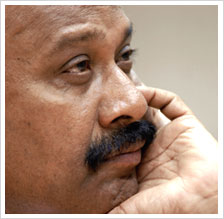 Corporate Social Responsibility
Corporate Social Responsibility

